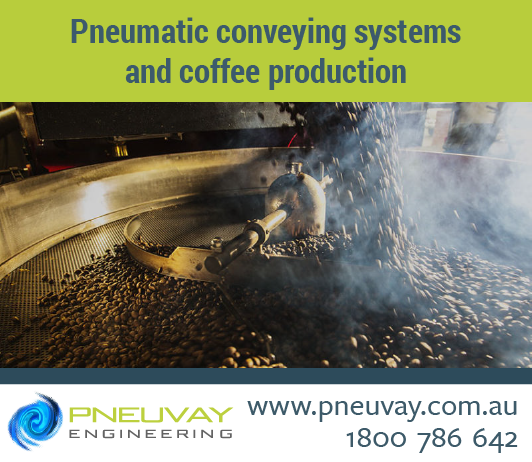Wednesday, December 13, 2017
Pneumatic conveying systems for manufacturing plants assist business in many ways and allow them move steadily through a competitive economy. Read how adding these systems into your production lines can affordably and effectively aid in your business success.
Pneumatic conveying systems and the manufacturing process
Pneumatic conveying systems are innovative solutions which help the manufacturing sector by generating efficiency without compromising the quality of their end products. They reduce costly hygiene and safety concerns by almost eliminates product contamination. They reduce costly manual labour and add increased capacity and flexibility to your production line. Pneumatic conveying systems boost production efficiency by:
- Lowering plant operational costs
- Reducing plant maintenance costs
- Increasing production speed
- Decreasing ingredient expenditure
Talk to us to know how pneumatic conveying systems can aid in your production flow.
How pneumatic conveying systems helps in the manufacturing process
Labour costs and pneumatic conveying systems for manufacturing plants
Labour has always been one of the highest costs in business. As labour prices continue to rise The need for pneumatic conveying systems to reduce labour costs when manufacture their products will become more viable.
Reduce increasing labour costs with pneumatic conveying
systems in manufacturing plants
Case Scenario: Coffee Production
Traditional coffee production requires manual material transfer which includes blending, batching and other intermediate steps. A typical coffee manufacturer would have a workforce of up to 40 people involved in this part of the manufacturer process.
As a typical solution, pneumatic conveying that included vacuum loaders would increase their coffee production output while reducing labour. Such a change would reduce the workforce to just 12. Moreover, the vacuum receiver’s output rate can be adjusted to allow the plant's production rate to increase or decrease without compromising the quality of their product.
Pneumatic conveying systems and coffee production
Pneumatic conveying system for manufacturing plants increases productivity
One of the major reasons why pneumatic conveying systems are the preferred choice of many manufacturing plants is its ability to increase production.
Case Scenario: Pool coating company
A pool coating company had a manual hand scooping process within their manufacturing process that was slow and cumbersome. They needed a faster way of loading their 500kg capacity blender with a height of 2.1m. The manual hand scooping method also created airborne dust. This dust generation needed to be eliminated.
With the aid of pneumatic conveying systems, the loading process into the blender became simpler and safer. What used to take 3 days of hand scooping was reduced single day. Pneumatic conveying systems were also applied to other processes within the plant such as:
- Blending
- Shelving
- Packaging
- Weighing out
In addition to increasing the manufacturing plant's output rates, the addition of pneumatic conveying systems also increased the manufacturing plant's reliability.
Easy cleaning and maintenance with pneumatic conveying systems for manufacturing plants
Pneumatic conveying prevents loose powder from becoming airborne. This makes it an excellent solution for manufacturing plants looking for a cleaner and safer environment all year round.
Case Scenario: Snack food manufacturer
A snack food manufacturer increased their productivity by using pneumatic conveyors and rather than their old bucket elevators. This eliminated the need for monthly preventive maintenance - the old elevator type bucket system had 20 moving parts.
With the pneumatic conveying system, they simply and easily swap out the boxes and clean them without disruption the production line. The oil and motor is only required to be checked just twice a year. This gives their production time an additional 30 hours to the benefit of the business.
Pneumatic conveying systems and snack food manufacturer
Volume reductions in waste and reclamation
Reclamation within manufacturing is the process of reclaiming materials back for re-use rather than going to waste. These materials may range from fine powders to larger particles.
Case scenario: baking industry
The use of dust suppression hoppers to deliver fine powders to larger particles to holding bins or dispensing machines has proven to be effective in reducing waste and reclamation. These types of hoppers are located directly above the topping machines and control the flow rate of the materials so dust is minimised. Also, the materials congregate in the center holding bins or dispensing machines which reduces wastage from spillage.
Pneumatic conveying systems and the baking industry
Case scenario: animal laboratory
There are instances wherein the product does not need to go back into the system but it should be separated out for a different use. Such as the case with this animal laboratory. Upon introducing pneumatic conveying system into the animal laboratory, its regular waste stream was reduced to 75%. This saved them about ten hours of labour per week. This made it possible for the waste material to be converted and reused as a fertiliser.
Pneumatic conveying systems and the reclamation process
Contact us for assistance
As the year comes to a close, the installation of pneumatic conveying systems to your manufacturing process is something worth considering for the year 2018. Do you have questions regarding this?
We are happy to schedule an appointment with you. Talk to us.
All News |
Back to Top







